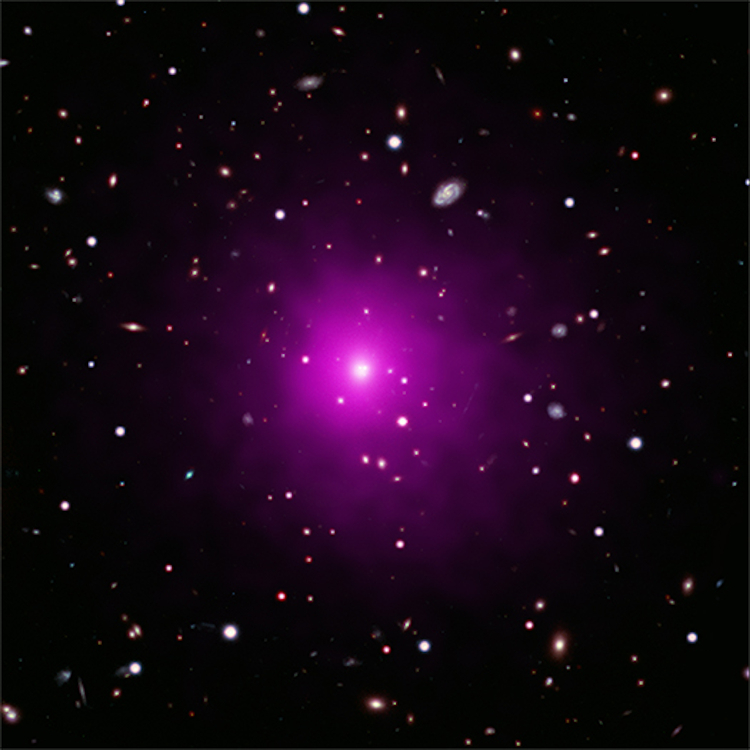
 Credit: X-ray: NASA/CXC/Univ of Michigan/K. Gčltekin; Optical: NASA/STScI and NAOJ/Subaru; Infrared: NSF/NOAO/KPNO
Credit: X-ray: NASA/CXC/Univ of Michigan/K. Gčltekin; Optical: NASA/STScI and NAOJ/Subaru; Infrared: NSF/NOAO/KPNO
Wholly Missing
Monster, supermassive black holes seem to reside at the very centers of most galaxies we see in the Universe. In fact, there's a mysterious connection between the mass of the central, supermassive black hole and the properties of the galaxy in which it resides, even though on the galactic scale the supermassive black hole is tiny. Often, these supermassive black holes accrete galactic matter from their surroundings and generate an outpouring of X-rays, optical light, and radio-emitting particle beams. So such monsters are not usually shy about revealing themselves. The image above shows an unusual case, however. This image above shows a composite of X-ray emission (from observations with the Chandra X-ray Observatory, in pink), ground-based infrared emission (in red), and an optical image (in green and blue) from the Hubble Space Telescope and from the Subaru telescope in Hawaii, of the central galaxy in the cluster of galaxies known as Abell 2261. Based on the properties of this galaxy, it should contain an extremely massive central black hole with a mass between 3 and 100 billion times the mass of the Sun (and about 1000 times more massive that Sgr A*, the supermassive black hole at the center of our own Milky Way galaxy). Normally, such a supermassive black hole would produce enormous amounts of X-ray emission at the very center of the galaxy. Surprisingly, however, the deep Chandra image shows no sign of any such emission. So where's the black hole? Perhaps, like Sgr A*, the black hole is not accreting actively. Another wilder possibility is that, perhaps, this galaxy collided with another, and, when the galaxies crashed together, their central black holes merged, generating an enormous amount of gravitational radiation which might have kicked the merged, even-more-supermassive black hole from the combined galaxy. This would mean that, somewhere, there's an unseen, supermassive black hole speeding through intergalactic space. Could it be headed our way?
Published: January 25, 2021
<
HEA Dictionary ● Archive
● Search HEAPOW
● Other Languages
● HEAPOW on Facebook
● Download all Images
● Education ● HEAD
>

Each week the HEASARC
brings you new, exciting and beautiful images from X-ray and Gamma ray
astronomy. Check back each week and be sure to check out the HEAPOW archive!
Page Author: Dr. Michael F. Corcoran
Last modified Tuesday, 27-Feb-2024 10:06:35 EST


